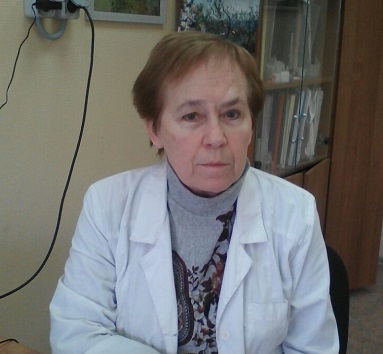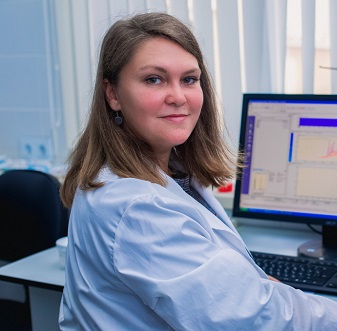Innovative strategies enhancing nutraceutical properties of vegetables, and aromatic-medicinal plants and mushrooms
 Department of Agricultural Sciences, University of Naples Federico II, Portici (Naples), ItalyInterests: Vegetable crops; Conventional farming; Organic management; Soilless growing; Fertilization; Biofortification; Microorganism inoculation; Light modification; Yield components; Quality indicators; Antioxidants; Mineral element composition; Residual biomass valorization
Department of Agricultural Sciences, University of Naples Federico II, Portici (Naples), ItalyInterests: Vegetable crops; Conventional farming; Organic management; Soilless growing; Fertilization; Biofortification; Microorganism inoculation; Light modification; Yield components; Quality indicators; Antioxidants; Mineral element composition; Residual biomass valorization Federal Scientific Center of Vegetable Production, Odintsovo District, Vniissok, Selectsionnaya 14, Moscow 143072, RussiaInterests: Vegetable crops; Biofortification; Selenium, Iodine; Microorganism inoculation; Soil chemical analyses; Plant chemical analyses; Functional food; Quality indicators; Cholophylls; Antioxidants; Ascorbic acid; Carotenoids; Polyphenols; Flavonoids; Antocyanyns; Mineral element composition
Federal Scientific Center of Vegetable Production, Odintsovo District, Vniissok, Selectsionnaya 14, Moscow 143072, RussiaInterests: Vegetable crops; Biofortification; Selenium, Iodine; Microorganism inoculation; Soil chemical analyses; Plant chemical analyses; Functional food; Quality indicators; Cholophylls; Antioxidants; Ascorbic acid; Carotenoids; Polyphenols; Flavonoids; Antocyanyns; Mineral element composition Department of Horticulture, Faculty of Biotechnology and Horticulture, University of Agriculture, 31-120 Krakow, PolandInterests: Reaction of horticultural crops to abiotic stress; The relationships between plants; Microorganisms and environment in horticultural ecosystems; Culinary and medicinal mushrooms; Biofortification and biostimulation of horticultural crops and mushrooms; Functional food; Biodiversity in horticulture
Department of Horticulture, Faculty of Biotechnology and Horticulture, University of Agriculture, 31-120 Krakow, PolandInterests: Reaction of horticultural crops to abiotic stress; The relationships between plants; Microorganisms and environment in horticultural ecosystems; Culinary and medicinal mushrooms; Biofortification and biostimulation of horticultural crops and mushrooms; Functional food; Biodiversity in horticulture Laboratory of Natural Antioxidants, Institute of Living Systems, Immanuel Kant Baltic Federal University, Kaliningrad, RussiaInterests: Biofortification; Selenium; Plant and soil chemical analyses; Functional food; Quality indicators; Biological active compounds; Antioxidants; Ascorbic acid; Carotenoids; Polyphenols; Flavonoids; Antocyanyns
Laboratory of Natural Antioxidants, Institute of Living Systems, Immanuel Kant Baltic Federal University, Kaliningrad, RussiaInterests: Biofortification; Selenium; Plant and soil chemical analyses; Functional food; Quality indicators; Biological active compounds; Antioxidants; Ascorbic acid; Carotenoids; Polyphenols; Flavonoids; Antocyanyns
Dear Colleagues,
Vegetables, as well as aromatic-medicinal plants and mushrooms are very spread worldwide and subjected to the continuous search for innovative strategies aimed to make the management systems increasingly sustainable, mainly referring to the environmental protection, in order to get produce characterized by high nutraceutical and hygienic-sanitary properties. In the latter respect, the choice of effective innovative farming practices plays a pivotal role, thus drawing the scientific community attention and stimulating related research. Some examples of innovative strategies within the main crops systems, i.e. conventional, organic or soilless, are the following. Fertilization has a major impact on the quality and bioactive features of the food carried out, as all the essential macro- and micronutrients should be supplied in order to fulfill plant requirements for synthesizing and accumulating beneficial compounds and mineral nutrients. The use of beneficial microorganisms such as endophytic fungi (arbuscular mycorrhizal fungi, Trichoderma) or plant growth promoting bacteria, even interacting with those naturally present in the plants like the nitrogen-fixing symbiotic bacteria, may increase the plant and mushroom nutrient absorption, thus enhancing the produce quality and antioxidant properties. The biofortification with micronutrients, i.e. selenium, iodine, silicon and others, may encourage the plant and mushroom antioxidant synthesis.
Indeed, the several literature reports relevant to the present topics have not worked out all the issues arisen and, therefore, in this interesting field of research plenty of challenges should be addressed. In the latter respect, a remarkable attention should be paid to the interactive dynamics between nutrient uptake, plant and mushroom development and synthesis of antioxidants. The latter are essential plant secondary metabolites acting in plant growth as well as in plant–microbe, plant–plant and plant-environment relationships, whose presence in significant concentrations also allows to produce vegetables labeled as functional food.
In this special issue, we warmly welcome articles (original research, reviews, modeling approaches, perspectives, opinions) that focus on innovative strategies affecting production, quality, antioxidant compounds and activity, and mineral composition of vegetables as well as aromatic-medicinal plants and mushrooms grown in open field or greenhouse, carried out upon investigations regarding the interactions between agronomical, biochemical, physiological, microbiological and genetic topics.
Prof. Dr. Gianluca Caruso, Dr. Nadezhda A. Golubkina, Assoc. Prof. Agnieszka Sekara and Assoc. Prof. Liubov Skrypnik
Guest Editors
Manuscripts should be submitted via our online editorial system at https://imr.propub.com by registering and logging in to this website. Once you are registered, click here to start your submission. Manuscripts can be submitted now or up until the deadline. All papers will go through peer-review process. Accepted papers will be published in the journal (as soon as accepted) and meanwhile listed together on the special issue website. Research articles, reviews as well as short communications are preferred. For planned papers, a title and short abstract (about 100 words) can be sent to the Editorial Office to announce on this website.
Submitted manuscripts should not have been published previously, nor be under consideration for publication elsewhere (except conference proceedings papers). All manuscripts will be thoroughly refereed through a double-blind peer-review process. Please visit the Instruction for Authors page before submitting a manuscript. The Article Processing Charge (APC) in this open access journal is 500 USD. Submitted manuscripts should be well formatted in good English.
- Open Access Original ResearchShort-term Variability of Macro- and Trace Elements in Elymus Repens L. and Urtica Dioica L.Irina Shtangeeva, Matti Niemelä, Alexander Ryumin, Vladimir Chelibanov, ... Paavo PerämäkiFront. Biosci. (Elite Ed) 2022, 14(3), 20; https://doi.org/10.31083/j.fbe1403020(This article belongs to the Special Issue Innovative strategies enhancing nutraceutical properties of vegetables, and aromatic-medicinal plants and mushrooms)59Downloads1Citations198Views
- Open Access Original ResearchEffect of salicylic acid on phenolic compounds, antioxidant and antihyperglycemic activity of Lamiaceae plants grown in a temperate climateLiubov Skrypnik, Anton Golovin, Tamara SavinaFront. Biosci. (Elite Ed) 2022, 14(1), 3; https://doi.org/10.31083/j.fbe1401003(This article belongs to the Special Issue Innovative strategies enhancing nutraceutical properties of vegetables, and aromatic-medicinal plants and mushrooms)251Downloads4Citations395Views

